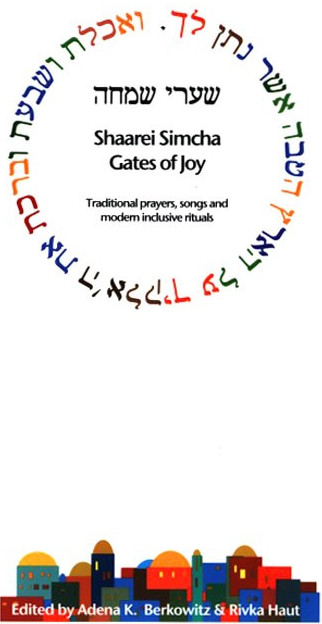Kosher Bookworm: Women bench too
No, this is not about some politically correct feminist work. “Shaarei Simcha” [Ktav Publishing House.2007] is a delightful carefully researched and comprehensive prayer guide and bencher for every English speaking Jewish household.
Edited by Rivka Haut, a longtime agunah activist and noted Torah scholar Dr. Adena Berkowitz, this work includes Birkat Hamazon that while adhering to halachah is sensitive to the religious needs of many groups – Ashkenazim, Sephardim, women, baalei teshuva, as well as people with children and those without.
While not the pop artistic work as are other less comprehensive benchers, this work is unique in the nature of its content and the maturity of its commentary.
According to Rivka Haut, “We were aware that there are many benchers available with beautiful graphics and illustrations. Our focus, however, was going to be on the text. We wanted to provide scholarly sources along with popular explanations and background discussions of various prayers and blessings connected with Shabbos and holidays. We felt it important to reintroduce techinot and customs that many might be unfamiliar with.”
Several examples of this will constitute the bulk of this review.
Included in this work is a blessing that a wife may recite for her husband as a parallel to Eishes Chayil which is an adaptation from Aneini by Rabbi Nachman Bulman, zt”l, techinot for separating challah, and two candle lighting in both Yiddish and English.
The Havdalah service includes optional readings of Miriam’s Well and Miriam Ha-N’viyah in Hebrew and the classic Yiddish pizmon, Gott Fuhn Avraham.
Also to be found is a special and sensitive parent’s prayer under the chuppah that was written by Tziporah Halivni, a Holocaust survivor, thus enabling both parents to actively participate in the wedding ceremony.
Other unique additions to the bencher content include a welcoming ceremony for adopted children, as well as a simchat habat for both natural born and adopted daughters, a ritual equivalent to a shalom zachar.
With the festival of Sukkos ‘just around the corner’ I found one very special innovation most intriguing ,that being the Ushpizim ritual which was utilized to include the Ushpizot, Sarah, Rivkah, Rachel, Leah, Miriam, Chana, Aviga’el, and Esther.
According to Dr. Berkowitz, in a detailed email reply to this issue:
“We researched the precedents for welcoming female ancestors into the sukkah. There are contemporary sources that reference ‘ushpizot’ in the non-Orthodox world as well as Orthodox sources including Rabbi Shlomo Riskin’s bencher. We wanted to help make women feel welcome in the sukkah; being aware that while in past generations many women did not avail themselves of sitting in a sukkah, today many more women have taken this mitzvah upon themselves. We felt what better role model but to provide a parallel version. We consulted several leading Aramaic scholars who assisted us with the male and female grammar. We based the women we included on the ‘seven niviot’ we find elsewhere.
Given that this is not a fixed text, it afforded the addition of a parallel additional text and creativity in who to include.”
Readers of this column may find several aspects of this work under review problematic in terms of halacha, especially as they concern the inclusion of a zimmun for women. To this matter the authors were quite forthcoming in defending this inclusion citing both the Rosh and the Vilna Gaon who obligated women to participate in”women only” zimmunim, while other authorities, according to the authors, permitted this.
Much more on this and other halachic issues are discussed in greater detail in this book’s extensive introduction including detailed citations by Rabbi Aharon Ziegler whose sourcing of Rav Joseph B. Soloveitchik’s opinions on this and related issues will be of great interest to you. Other aspects of this introduction should also merit your careful attention. There is much to be learned from these pages.

 53.0°,
Light Drizzle Fog
53.0°,
Light Drizzle Fog 




